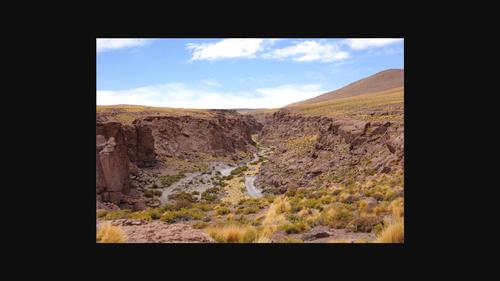The geological evolution of the Silala River basin, Central Andes
IF 5.8
1区 地球科学
Q1 ENVIRONMENTAL SCIENCES
引用次数: 0
Abstract
Abstract Improved understanding of the geology and stratigraphic architecture of the Silala River basin and its evolution, reviewed here, has been important in providing scientific evidence to an international dispute between Chile and Bolivia on the nature and origin of the waters of the Silala River. The dispute was submitted in 2016 to International Court of Justice (ICJ), which issued its judgment in 2022. The Silala River has evolved within an active volcanic chain, in the western region of the Andean plateau. Various volcanic structures, at different stages of their evolution, have determined the basin's development. The first evidence of alluvial drainage associated with the Silala fluvial system appeared in the Lower Pleistocene (ca. 2.6–1.6 Ma), a record of alluvial deposits with paleoflow directions toward the Southwest and South‐Southwest. These deposits had an important role in forming a highly permeable horizon, confined between two pyroclastic deposits (the Cabana and Silala Ignimbrites) which comprise the main regional aquifer in the basin, although there are other minor locally important aquifers. The second stage in the evolution of the river system occurred in the late Upper Pleistocene‐Lower Holocene (ca. 11–8.5 ka BP), when an erosive period carved the current trans‐boundary ravine in the Silala Ignimbrite. Morphological evidence clearly shows that the ravine was carved by fluvial action. The only documented tectonic activity during the development of the Silala River basin is the Cabana reverse fault and associated normal faults, representing an East–West shortening, which occurred between 2.6 and 1.6 Ma. This article is categorized under: Science of Water > Water and Environmental Change Science of Water > Hydrological Processes Water and Life > Nature of Freshwater Ecosystems Human Water > Water Governance

安第斯山脉中部西拉拉河盆地的地质演化
本文综述了对西拉拉河流域的地质和地层结构及其演化的进一步了解,为智利和玻利维亚之间关于西拉拉河的性质和起源的国际争端提供了重要的科学证据。该争端于2016年提交给国际法院(ICJ),该法院于2022年发布了判决。西拉拉河是在安第斯高原西部的一条活火山链中形成的。不同演化阶段的火山构造决定了盆地的发育。与新拉拉河系统相关的冲积排水的第一个证据出现在下更新世(约2.6-1.6 Ma),这是一个冲积沉积的记录,古水流方向向西南和南西南方向。这些矿床在形成高渗透性层位方面发挥了重要作用,该层位被限制在两个火山碎屑矿床(Cabana和Silala Ignimbrites)之间,这两个矿床构成了盆地的主要区域含水层,尽管还有其他较小的局部重要含水层。河流系统演化的第二阶段发生在上更新世晚期-全新世晚期(约11-8.5 ka BP),当时一个侵蚀期雕刻了Silala Ignimbrite现今的跨界峡谷。形态学证据清楚地表明,峡谷是由河流作用雕刻而成的。在西拉拉河流域发育过程中,唯一记录的构造活动是卡巴纳逆断层及其伴生的正断层,表现为东西向缩短,发生在2.6 ~ 1.6 Ma之间。本文分类如下:水科学;水与环境变化;水文过程水与生命淡水生态系统与人类用水的性质水治理
本文章由计算机程序翻译,如有差异,请以英文原文为准。
求助全文
约1分钟内获得全文
求助全文
来源期刊

Wiley Interdisciplinary Reviews: Water
Environmental Science-Ecology
CiteScore
16.60
自引率
3.70%
发文量
56
期刊介绍:
The WIREs series is truly unique, blending the best aspects of encyclopedic reference works and review journals into a dynamic online format. These remarkable resources foster a research culture that transcends disciplinary boundaries, all while upholding the utmost scientific and presentation excellence. However, they go beyond traditional publications and are, in essence, ever-evolving databases of the latest cutting-edge reviews.
 求助内容:
求助内容: 应助结果提醒方式:
应助结果提醒方式:


